Opinion & Analysis
A merciful new local rule
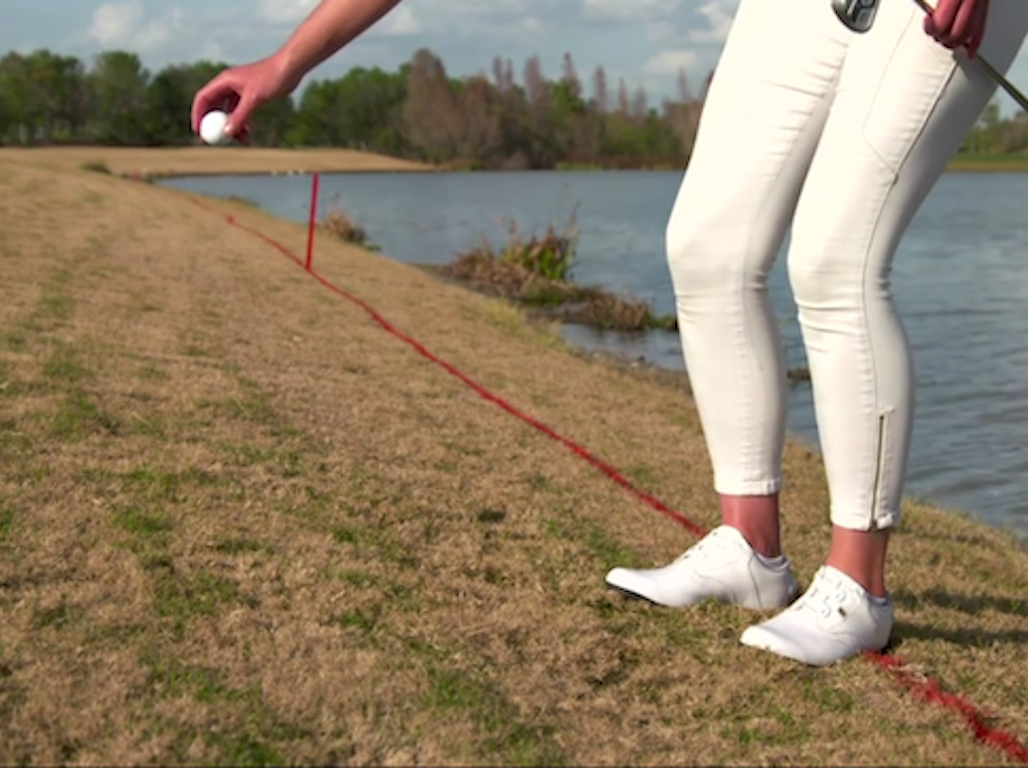
This April, within a list of 2019 Rules Clarifications, the USGA and R&A quietly authorized a new Local Rule that you can expect to see enacted everywhere from the U.S. Open Championship to, if you’re lucky, your own club championship.
New Local Rule E-12 provides some protection from an unintended consequence of Rule 14.3c, which requires that your ball come to rest in the relief area for the drop you’re taking. When I first read about this option, I confess that I was a bit skeptical. But now that I’ve experienced the Local Rule in action, its value has become very clear.
My initial skepticism came from the fact that I like it that every time, we drop we now must drop in a relief area. I also like the simplicity of requiring the ball to come to rest in that relief area — no more awkward need to figure out if your ball stayed within two club lengths of the point where your drop first struck the course, as used to be the case. So right from the start, I was very comfortable with the new rules in this regard. But in some cases, particularly for those who haven’t carefully studied the revised rules, this simple approach has caused problems.
The freedom this new Local Rule provides applies exclusively to back-on-the-line relief drops, such as you might make from penalty areas or for unplayable balls. It’s a bit complicated, but let me take you through how it helps. We’ll use yellow-staked penalty areas as an example. Last year, for back-on-the-line drops such as these, you’d identify the point where your ball last crossed the margin of the water hazard and draw an imaginary line from the flagstick through that point, select a nice place to drop anywhere you chose back along that line, and then let it drop. If you picked a point sufficiently back, and your ball didn’t hit anything prohibited, and it didn’t stop more than two club lengths from where you dropped it, you were good to go.
This year, instead of dropping on that imaginary line, you drop in a relief area that surrounds that imaginary line. Just like before, you identify the edge of the penalty area where your ball last crossed, go back as far as you wish along an imaginary line from the flagstick through that point — but now you should identify a relief area around your selected drop location. To do so, you pick a point on the line, then define a relief area one club length from that point no closer to the hole. So you typically have a semicircle two club lengths in diameter in which to drop. If you drop a foot or two back from the front edge of the semicircle, there’s almost always no problem with the ball coming to rest outside the releif area and you’ll be ready to play. But if you drop right on the front edge of your defined relief area, or if you didn’t bother to identify a point/relief area along the imaginary line before you dropped, and your ball bounces and comes to rest even the slightest bit forward — it’s now outside the relief area and subject to a two-stroke or loss of hole penalty for playing from the wrong place if you end up hitting the ball before correcting your mistake.
That might seem kind of harsh — you take a back-on-the-line drop like you did last year, it bounces and stops an inch forward, you hit it — and you get severely penalized. If you had simply established the relief area an inch or two forward, things would have been perfectly legal! The 2019 rules, in their effort to simplify and make consistent the drop/relief procedure, created an unintended potential trap for players that weren’t careful enough managing their business. This seemed like it was going to be a big enough problem that the USGA and R&A decided to graciously do something about it: Introduce Model Local Rule E-12.
When this Local Rule is adopted, a player is given some additional freedom. If he or she applies the relief area/drop principles correctly, there is, of course, still no problem. But if he or she ends up with the ball somewhat outside the relief area, there still might be no penalty. As long as the ball originally struck the course within where the relief area should be, and as long as it didn’t come to rest more than one club length from where it first hit the course when dropped, you can still play it penalty-free (as long as it’s not nearer the hole than where the ball originally lay in the case of an unplayable ball drop, or nearer the hole than the edge of the penalty area where the ball last crossed for a penalty area drop).
While all that’s a bit complicated sounding, in practice it’s intuitive. And as an added bonus, it probably doesn’t matter if you don’t understand it or even know it’s in force — there are simply more occasions when you can blissfully, even ignorantly, play on penalty-free.
This new Local Rule provides another advantage as well. When it’s in effect, an opponent or ref (or a TV viewer) won’t have to concern themselves with whether or not the player making the drop actually followed the recommendation of first defining a relief area before making a back-on-the-line drop. If you’re at a distance, and you see a player taking a drop which bounces slightly forward, you can relax. You don’t have to wonder whether or not you should rush up and confirm that the ball didn’t squeak out of the player’s intended relief area in an effort to prevent the player from incurring a penalty. One way or another, everything is more than likely just fine.
With all that in mind, maybe you’d like to see the specific wording of E-12:
“When taking Back-On-the-Line relief, there is no additional penalty if a player plays a ball that was dropped in the relief area required by the relevant Rule (Rule 16.1c(2), 17.1d(2), 19.2b or 19.3b) but came to rest outside the relief area, so long as the ball, when played, is within one club-length of where it first touched the ground when dropped.
“This exemption from penalty applies even if the ball is played from nearer the hole than the reference point (but not if played from nearer the hole than the spot of the original ball or the estimated point where the ball last crossed the edge of the penalty area).
“This Local Rule does not change the procedure for taking Back-On-the-Line relief under a relevant Rule. This means that the reference point and relief area are not changed by this Local Rule and that Rule 14.3c(2) can be applied by a player who drops a ball in the right way and it comes to rest outside the relief area, whether this occurs on the first or second drop.”
- LIKE23
- LEGIT1
- WOW0
- LOL4
- IDHT0
- FLOP4
- OB5
- SHANK31
19th Hole
Vincenzi’s 2024 Zurich Classic of New Orleans betting preview

The PGA TOUR heads to New Orleans to play the 2023 Zurich Classic of New Orleans. In a welcome change from the usual stroke play, the Zurich Classic is a team event. On Thursday and Saturday, the teams play best ball, and on Friday and Sunday the teams play alternate shot.
TPC Louisiana is a par 72 that measures 7,425 yards. The course features some short par 4s and plenty of water and bunkers, which makes for a lot of exciting risk/reward scenarios for competitors. Pete Dye designed the course in 2004 specifically for the Zurich Classic, although the event didn’t make its debut until 2007 because of Hurricane Katrina.
Coming off of the Masters and a signature event in consecutive weeks, the field this week is a step down, and understandably so. Many of the world’s top players will be using this time to rest after a busy stretch.
However, there are some interesting teams this season with some stars making surprise appearances in the team event. Some notable teams include Patrick Cantlay and Xander Schauffele, Rory McIlroy and Shane Lowry, Collin Morikawa and Kurt Kitayama, Will Zalatoris and Sahith Theegala as well as a few Canadian teams, Nick Taylor and Adam Hadwin and Taylor Pendrith and Corey Conners.
Past Winners at TPC Louisiana
- 2023: Riley/Hardy (-30)
- 2022: Cantlay/Schauffele (-29)
- 2021: Leishman/Smith (-20)
- 2019: Palmer/Rahm (-26)
- 2018: Horschel/Piercy (-22)
- 2017: Blixt/Smith (-27)
2024 Zurich Classic of New Orleans Picks
Tom Hoge/Maverick McNealy +2500 (DraftKings)
Tom Hoge is coming off of a solid T18 finish at the RBC Heritage and finished T13 at last year’s Zurich Classic alongside Harris English.
This season, Hoge is having one of his best years on Tour in terms of Strokes Gained: Approach. In his last 24 rounds, the only player to top him on the category is Scottie Scheffler. Hoge has been solid on Pete Dye designs, ranking 28th in the field over his past 36 rounds.
McNealy is also having a solid season. He’s finished T6 at the Waste Management Phoenix Open and T9 at the PLAYERS Championship. He recently started working with world renowned swing coach, Butch Harmon, and its seemingly paid dividends in 2024.
Keith Mitchell/Joel Dahmen +4000 (DraftKings)
Keith Mitchell is having a fantastic season, finishing in the top-20 of five of his past seven starts on Tour. Most recently, Mitchell finished T14 at the Valero Texas Open and gained a whopping 6.0 strokes off the tee. He finished 6th at last year’s Zurich Classic.
Joel Dahmen is having a resurgent year and has been dialed in with his irons. He also has a T11 finish at the PLAYERS Championship at TPC Sawgrass which is another Pete Dye track. With Mitchell’s length and Dahmen’s ability to put it close with his short irons, the Mitchell/Dahmen combination will be dangerous this week.
Taylor Moore/Matt NeSmith +6500 (DraftKings)
Taylor Moore has quickly developed into one of the more consistent players on Tour. He’s finished in the top-20 in three of his past four starts, including a very impressive showing at The Masters, finishing T20. He’s also finished T4 at this event in consecutive seasons alongside Matt NeSmith.
NeSmith isn’t having a great 2024, but has seemed to elevate his game in this format. He finished T26 at Pete Dye’s TPC Sawgrass, which gives the 30-year-old something to build off of. NeSmith is also a great putter on Bermudagrass, which could help elevate Moore’s ball striking prowess.
- LIKE8
- LEGIT3
- WOW1
- LOL1
- IDHT0
- FLOP3
- OB1
- SHANK2
19th Hole
Vincenzi’s 2024 LIV Adelaide betting preview: Cam Smith ready for big week down under

After having four of the top twelve players on the leaderboard at The Masters, LIV Golf is set for their fifth event of the season: LIV Adelaide.
For both LIV fans and golf fans in Australia, LIV Adelaide is one of the most anticipated events of the year. With 35,000 people expected to attend each day of the tournament, the Grange Golf Club will be crawling with fans who are passionate about the sport of golf. The 12th hole, better known as “the watering hole”, is sure to have the rowdiest of the fans cheering after a long day of drinking some Leishman Lager.
The Grange Golf Club is a par-72 that measures 6,946 yards. The course features minimal resistance, as golfers went extremely low last season. In 2023, Talor Gooch shot consecutive rounds of 62 on Thursday and Friday, giving himself a gigantic cushion heading into championship Sunday. Things got tight for a while, but in the end, the Oklahoma State product was able to hold off The Crushers’ Anirban Lahiri for a three-shot victory.
The Four Aces won the team competition with the Range Goats finishing second.
*All Images Courtesy of LIV Golf*
Past Winners at LIV Adelaide
- 2023: Talor Gooch (-19)
Stat Leaders Through LIV Miami
Green in Regulation
- Richard Bland
- Jon Rahm
- Paul Casey
Fairways Hit
- Abraham Ancer
- Graeme McDowell
- Henrik Stenson
Driving Distance
- Bryson DeChambeau
- Joaquin Niemann
- Dean Burmester
Putting
- Cameron Smith
- Louis Oosthuizen
- Matt Jones
2024 LIV Adelaide Picks
Cameron Smith +1400 (DraftKings)
When I pulled up the odds for LIV Adelaide, I was more than a little surprised to see multiple golfers listed ahead of Cameron Smith on the betting board. A few starts ago, Cam finished runner-up at LIV Hong Kong, which is a golf course that absolutely suits his eye. Augusta National in another course that Smith could roll out of bed and finish in the top-ten at, and he did so two weeks ago at The Masters, finishing T6.
At Augusta, he gained strokes on the field on approach, off the tee (slightly), and of course, around the green and putting. Smith able to get in the mix at a major championship despite coming into the week feeling under the weather tells me that his game is once again rounding into form.
The Grange Golf Club is another course that undoubtedly suits the Australian. Smith is obviously incredibly comfortable playing in front of the Aussie faithful and has won three Australian PGA Championship’s. The course is very short and will allow Smith to play conservative off the tee, mitigating his most glaring weakness. With birdies available all over the golf course, there’s a chance the event turns into a putting contest, and there’s no one on the planet I’d rather have in one of those than Cam Smith.

Louis Oosthuizen +2200 (DraftKings)
Louis Oosthuizen has simply been one of the best players on LIV in the 2024 seas0n. The South African has finished in the top-10 on the LIV leaderboard in three of his five starts, with his best coming in Jeddah, where he finished T2. Perhaps more impressively, Oosthuizen finished T7 at LIV Miami, which took place at Doral’s “Blue Monster”, an absolutely massive golf course. Given that Louis is on the shorter side in terms of distance off the tee, his ability to play well in Miami shows how dialed he is with the irons this season.
In addition to the LIV finishes, Oosthuizen won back-to-back starts on the DP World Tour in December at the Alfred Dunhill Championship and the Mauritus Open. He also finished runner-up at the end of February in the International Series Oman. The 41-year-old has been one of the most consistent performers of 2024, regardless of tour.
For the season, Louis ranks 4th on LIV in birdies made, T9 in fairways hit and first in putting. He ranks 32nd in driving distance, but that won’t be an issue at this short course. Last season, he finished T11 at the event, but was in decent position going into the final round but fell back after shooting 70 while the rest of the field went low. This season, Oosthuizen comes into the event in peak form, and the course should be a perfect fit for his smooth swing and hot putter this week.

- LIKE12
- LEGIT3
- WOW1
- LOL1
- IDHT0
- FLOP1
- OB1
- SHANK1
Opinion & Analysis
The Wedge Guy: What really makes a wedge work? Part 1

Of all the clubs in our bags, wedges are almost always the simplest in construction and, therefore, the easiest to analyze what might make one work differently from another if you know what to look for.
Wedges are a lot less mysterious than drivers, of course, as the major brands are working with a lot of “pixie dust” inside these modern marvels. That’s carrying over more to irons now, with so many new models featuring internal multi-material technologies, and almost all of them having a “badge” or insert in the back to allow more complex graphics while hiding the actual distribution of mass.
But when it comes to wedges, most on the market today are still single pieces of molded steel, either cast or forged into that shape. So, if you look closely at where the mass is distributed, it’s pretty clear how that wedge is going to perform.
To start, because of their wider soles, the majority of the mass of almost any wedge is along the bottom third of the clubhead. So, the best wedge shots are always those hit between the 2nd and 5th grooves so that more mass is directly behind that impact. Elite tour professionals practice incessantly to learn to do that consistently, wearing out a spot about the size of a penny right there. If impact moves higher than that, the face is dramatically thinner, so smash factor is compromised significantly, which reduces the overall distance the ball will fly.
Every one of us, tour players included, knows that maddening shot that we feel a bit high on the face and it doesn’t go anywhere, it’s not your fault.
If your wedges show a wear pattern the size of a silver dollar, and centered above the 3rd or 4th groove, you are not getting anywhere near the same performance from shot to shot. Robot testing proves impact even two to three grooves higher in the face can cause distance loss of up to 35 to 55 feet with modern ‘tour design’ wedges.
In addition, as impact moves above the center of mass, the golf club principle of gear effect causes the ball to fly higher with less spin. Think of modern drivers for a minute. The “holy grail” of driving is high launch and low spin, and the driver engineers are pulling out all stops to get the mass as low in the clubhead as possible to optimize this combination.
Where is all the mass in your wedges? Low. So, disregarding the higher lofts, wedges “want” to launch the ball high with low spin – exactly the opposite of what good wedge play requires penetrating ball flight with high spin.
While almost all major brand wedges have begun putting a tiny bit more thickness in the top portion of the clubhead, conventional and modern ‘tour design’ wedges perform pretty much like they always have. Elite players learn to hit those crisp, spinny penetrating wedge shots by spending lots of practice time learning to consistently make contact low in the face.
So, what about grooves and face texture?
Grooves on any club can only do so much, and no one has any material advantage here. The USGA tightly defines what we manufacturers can do with grooves and face texture, and modern manufacturing techniques allow all of us to push those limits ever closer. And we all do. End of story.
Then there’s the topic of bounce and grinds, the most complex and confusing part of the wedge formula. Many top brands offer a complex array of sole configurations, all of them admittedly specialized to a particular kind of lie or turf conditions, and/or a particular divot pattern.
But if you don’t play the same turf all the time, and make the same size divot on every swing, how would you ever figure this out?
The only way is to take any wedge you are considering and play it a few rounds, hitting all the shots you face and observing the results. There’s simply no other way.
So, hopefully this will inspire a lively conversation in our comments section, and I’ll chime in to answer any questions you might have.
And next week, I’ll dive into the rest of the wedge formula. Yes, shafts, grips and specifications are essential, too.
- LIKE34
- LEGIT7
- WOW1
- LOL1
- IDHT2
- FLOP3
- OB1
- SHANK3
-

 19th Hole2 weeks ago
19th Hole2 weeks agoDave Portnoy places monstrous outright bet for the 2024 Masters
-

 19th Hole4 days ago
19th Hole4 days agoJustin Thomas on the equipment choice of Scottie Scheffler that he thinks is ‘weird’
-

 19th Hole2 weeks ago
19th Hole2 weeks agoTiger Woods arrives at 2024 Masters equipped with a putter that may surprise you
-

 19th Hole4 days ago
19th Hole4 days ago‘Absolutely crazy’ – Major champ lays into Patrick Cantlay over his decision on final hole of RBC Heritage
-

 19th Hole2 weeks ago
19th Hole2 weeks agoTwo star names reportedly blanked Jon Rahm all week at the Masters
-

 19th Hole1 week ago
19th Hole1 week agoReport: LIV Golf identifies latest star name they hope to sign to breakaway tour
-

 19th Hole2 weeks ago
19th Hole2 weeks agoNeal Shipley presser ends in awkward fashion after reporter claims Tiger handed him note on 8th fairway
-

 19th Hole1 week ago
19th Hole1 week agoBrandel Chamblee has ‘no doubt’ who started the McIlroy/LIV rumor and why



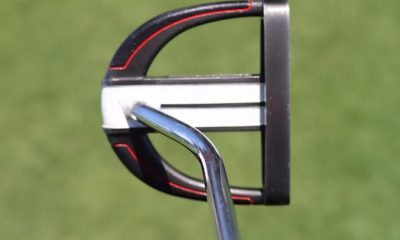



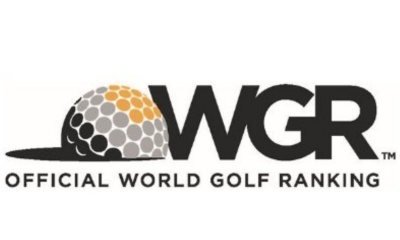



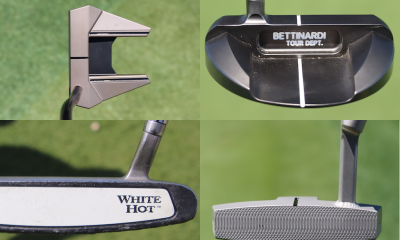

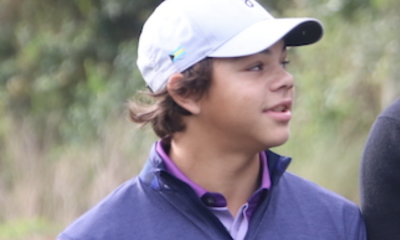










Mad-Mex
Jun 23, 2019 at 5:31 pm
How about just PLACING the ball ? Would also speed up play!
logan
Jun 22, 2019 at 1:53 am
zero chance those are mens pants
TobyFark McGeezax
Jun 21, 2019 at 9:41 pm
Horribly boring article. No wonder golf is dying.
CrashTestDummy
Jun 21, 2019 at 1:37 pm
Can’t stand the new drop rule. They should amend it to where you can’t drop the ball lower than your knee, but allow you to drop it from any height above that legally. There is no advantage from dropping it higher. The penalties on players dropping it the old way was ridiculous.
15th Club
Jun 22, 2019 at 8:11 am
You clearly don’t understand why the Rule was changed. The height of a drop was mandatorily lowered, so that dropped balls are less likely to bounce out of the relief area upon hitting the ground. Or to plug, when dropped in a bunker.
And the USGA took the time to explain this Rule to Dummy’s like you, HERE:
https://www.usga.org/content/usga/home-page/rules-hub/rules-modernization/major-changes/new-procedure-for-dropping-a-ball.html
Tiger Noods
Jun 24, 2019 at 5:30 am
That’s completely bogus, because as you likely recall, the USGA was originally going to be ok with “dropping” from 1 inch.
Either the drop should be able to finish its drop within the defined relief area, or the rule should be that the ball may be PLACED instead of dropped.
The 12″ arbitrary limit / knee height was borne of people saying that a one inch drop amounted to placing. Well, it’s one or another. I’m happy that you could place after a penalty, but it’s just flatly dumb to penalizing a ball dropped from higher than the required amount. And there’s no “dummy” explanation; they backtracked and still got it wrong.
Placing, or a drop from a MINIMUM height. Dropping from a height above a maximum of knee height will go away as soon as the USGA has enough time to wipe the egg off their faces.